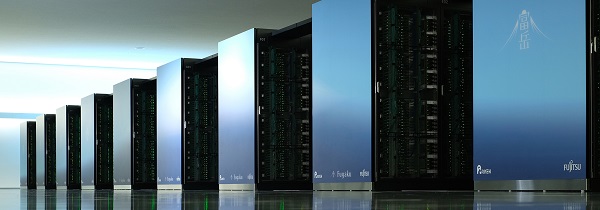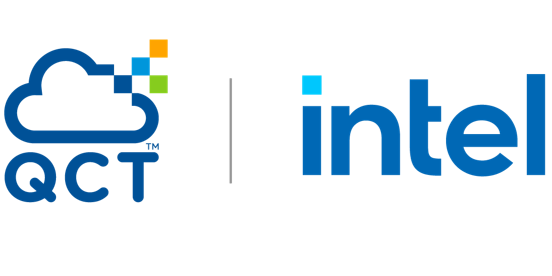 The new TOP500 list of the world’s most powerful supercomputers, released today at the SC22 conference in Dallas, while short on surprises underlines several significant HPC trends.
The new TOP500 list of the world’s most powerful supercomputers, released today at the SC22 conference in Dallas, while short on surprises underlines several significant HPC trends.
First the headline: the HPE-built, AMD-powered Frontier system, which was crowned the world’s first exascale-class system when the previous TOP500 list was released last spring, remains at the top of the list, delivering nearly three times the power of its nearest rival on the list. Frontier remains at 1.102 exaFLOPS (a billion billion calculations per second) on the HPL (high performance LINPACK) benchmark, which measures a system’s floating point computing power. That’s the same score Frontier turned in six months ago but well ahead of the world’s no. 2 system, the Arm-powered Fugaku system, at 442 petaFLOPS, housed at Japan’s Riken Center for Computational Science.
The nos. 3 and 4 systems on the list reflect growing supercomputing power in Europe: The upgraded HPE-Cray LUMI system installed at CSC in Finland is the No. 3 with a performance of 309.1 petaFLOPS. The system is a proect of the European High-Performance Computing Joint Undertaking (EuroHPC JU).
A new entry in the top 10 is at the No. 4 position is , Leonardo, installed at the CINECA EuroHPC site in Bologna, Italy. It is an Atos BullSequana XH2000 system with Intel Xeon Platinum 8358 32C 2.6GHz as main processors, NVIDIA A100 SXM4 40 GB as accelerators and Quad-rail NVIDIA HDR100 Infiniband as interconnect. It achieved a Linpack performance of 174.7 petaFLOPS.
At nos. 5 and 6 are Summit at 148.8 petaFLOPS (at Oak Ridge National Lab) and Sierra at 94.6 petaFLOPS (at Lawrence Livermore National Lab) systems, both of which are IBM-NVIDIA systems that have been on the list since 2018.

Rounding out the TOP500 top 10:
- Sunway TaihuLight, a system developed by China’s National Research Center of Parallel Computer Engineering & Technology (NRCPC) and installed at the National Supercomputing Center in Wuxi
- Perlmutter at No. 8, based on the HPE Cray “Shasta” platform and a heterogeneous system with AMD EPYC-based nodes and 1,536 NVIDIA A100 accelerated nodes; Perlmutter achieved 64.6 pertaFLOPS
- Seleneat No. 9, an in-house NVIDIA DGX A100 SuperPOD based on AMD EPYC CPUs with NVIDIA A100 for acceleration and a Mellanox HDR InfiniBand as network and achieved 63.4 Pflop/s
- Tianhe-2A (Milky Way-2A), a 61.4 petaFLOPS system developed by China’s National University of Defense Technology (NUDT) and deployed at the National Supercomputer Center in Guangzhou
It should be noted that while there are two Chinese systems in the top 10, China has stopped submitting information to the TOP500 for its leading systems, including the several exascale-class systems the country is believed to have.
TOP500 said the new list shows that AMD processors “are still the preferred choice for HPC systems,” pointing out that Frontier uses Gen AMD EPYC processors optimized for HPC and AI, as did the No. 3 LUMI system. That said, Intel Xeon chips were also prevalent on the list. In fact, the new Leornardo system uses Xeon Platinum processors. But AMD has a growing presence on new systems coming on to the list.

Fugaku
Also, China and the United States have most of the entries on this list – the U.S. at 126 while China dropped from 173 systems to 162, which also reflects China’s non-TOP500 participation. In all, the two countries make up nearly two-thirds of the machines on the list, but Europe accounted for 131 machines compare with 118 machines on the June list.
System interconnects on the new list are little changed. Ethernet increased from 226 to 233 machines, and Infiniband dropped from 196 to 194 machines. Omnipath dropped to 36 machines from the previous 40, and the number of proprietary networks dropped from 6 systems to 4 on the new list, according to TOP500.
On the GREEN500 list that measures HPC energy efficiency, the Frontier Test Development System, “Crusher,” was displaced as the no. 1 system by the Henri system at the Flatiron Institute in New York. Henri, which ranks no. 405 on the TOP500 list, has an efficiency score of 65.09 GFlops/Watts, 5,920 cores, and an HPL score of 2.038 peraFLOPS. Frontier TDS at no. 2 achieved an efficiency score of 62.68 GFlops/Watts.
TOP500 announced that the HPL-AI list has been renamed “HPL-MxP,” which highlights the convergence of HPC and AI workloads based on machine learning and deep learning. Coming in at no. 1 is Frontier at 7.9 exaFLOPS, with Lumi at no. 2 with a score of 2.2 exaFLOPS and Fugaku at 2.0 exaFLOPS.



